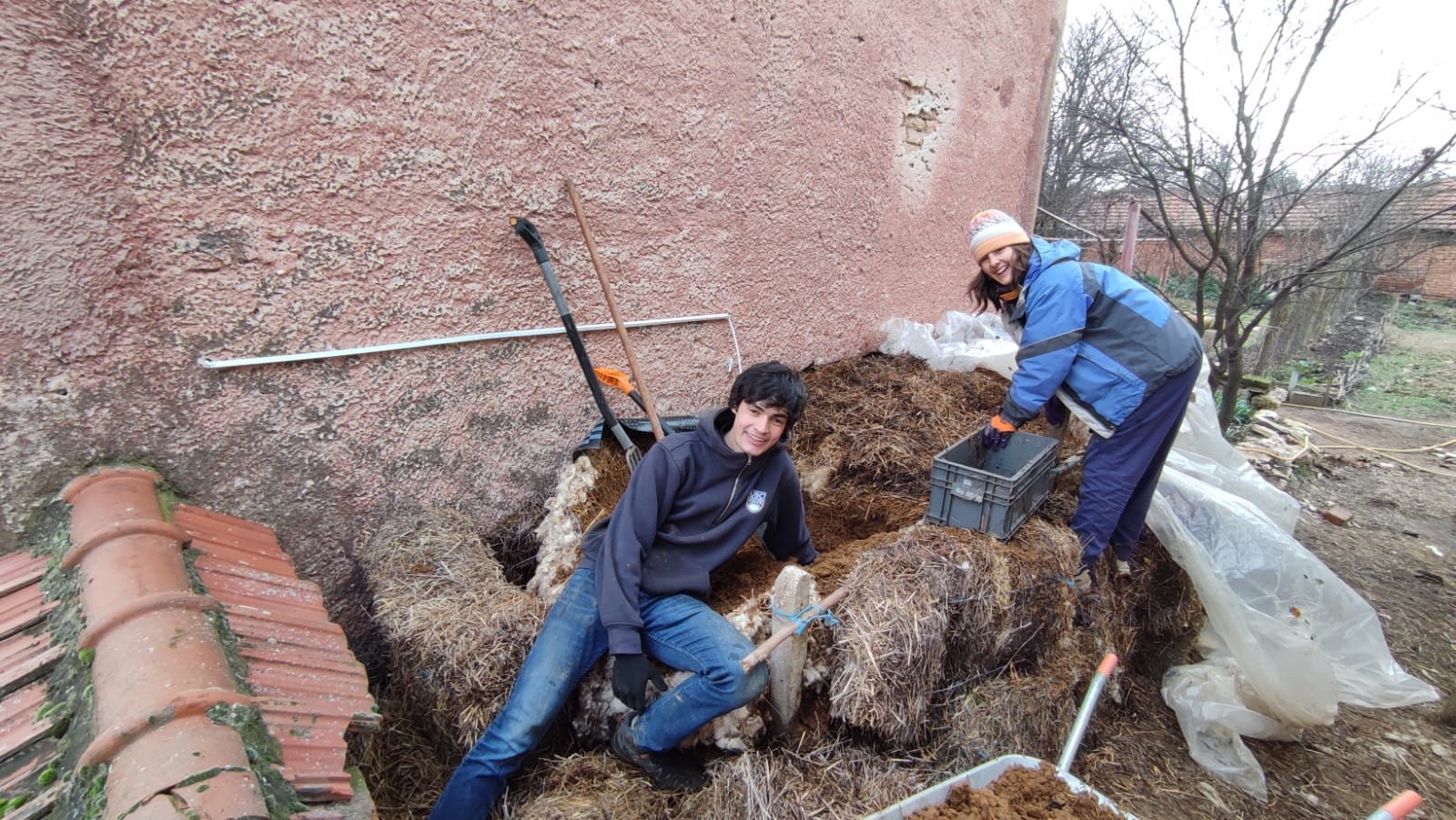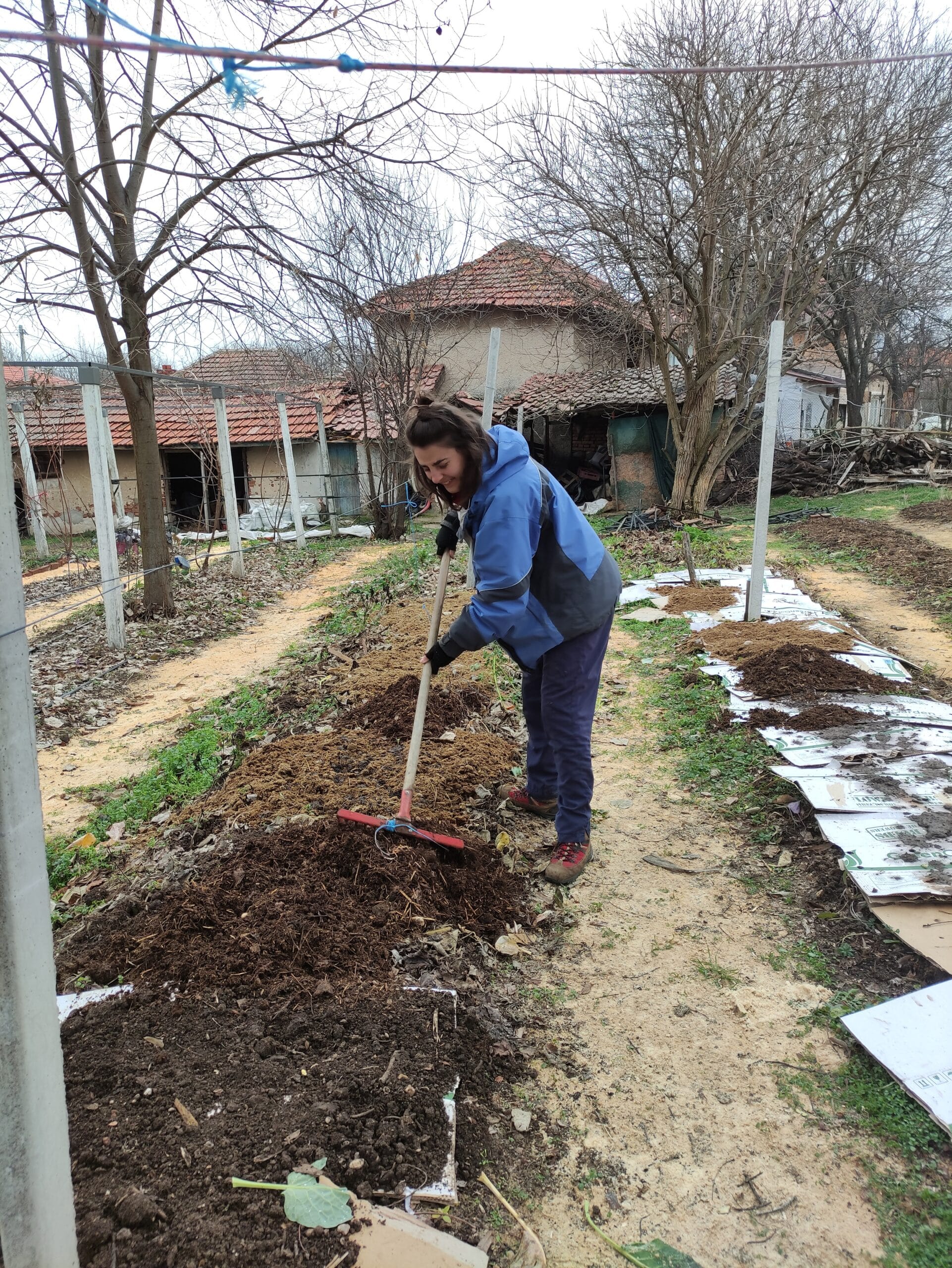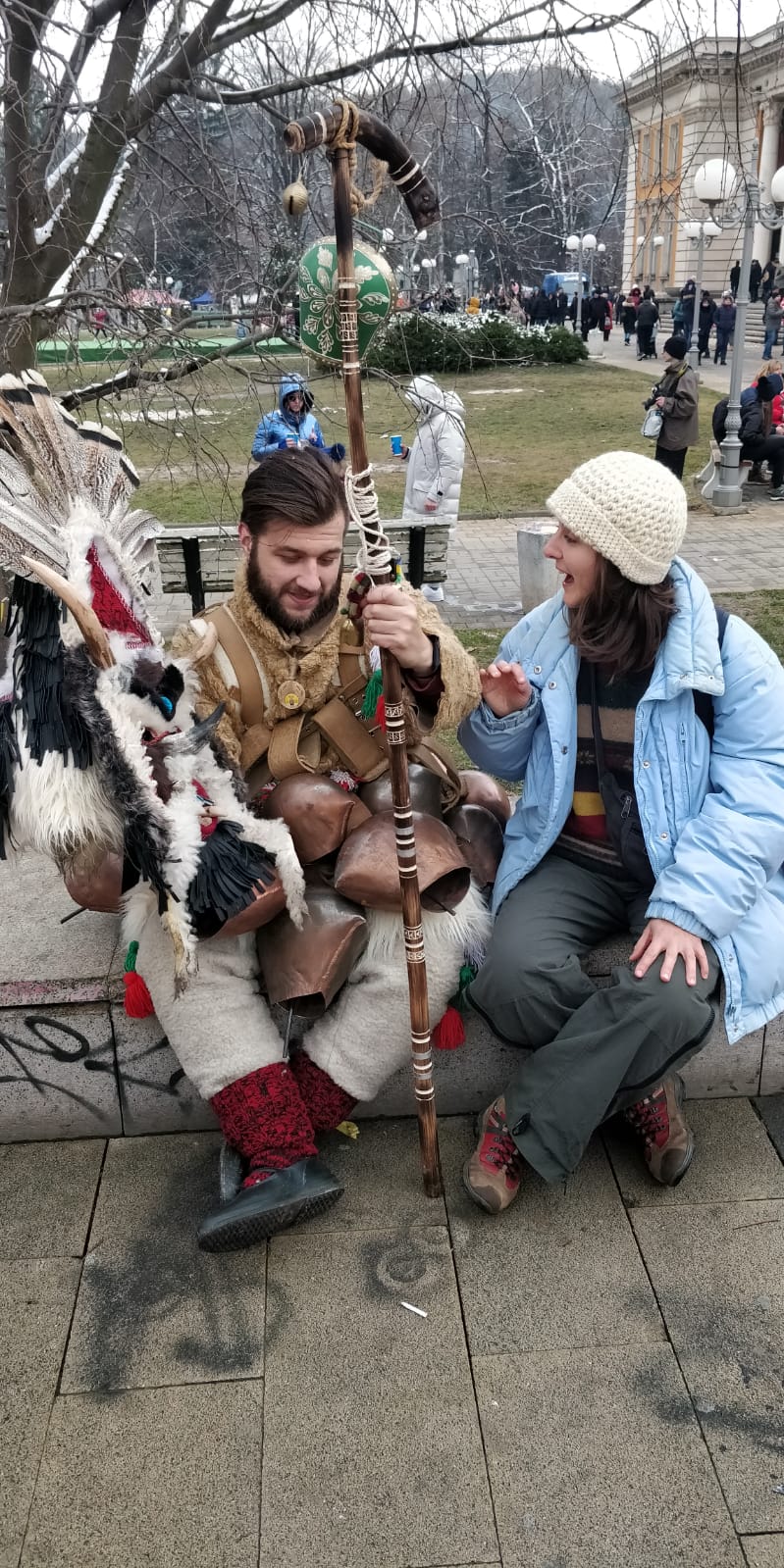Paula:
During the last month we have been working in preparing the beds for the spring. But… what does it really mean? Basically, we are trying to improve soil fertility and to provide a healthy environment both for our vegetables and the organisms that live with us! Let’s get more in depth…
The Food and Agriculture Organization of the United Nations (FAO) defines soil fertility as follows:
“Soil fertility is the ability of a soil to sustain plant growth by providing essential plant nutrients and favorable chemical, physical, and biological characteristics as a habitat for plant growth. Plant nutrients include the macronutrients nitrogen, phosphorus and potassium, sulfur, calcium and magnesium. Micronutrients are essentially boron, chlorine, copper, iron, manganese, molybdenum and zinc.”
We all agree that a healthy soil supports food production, but it also offers other benefits. Sustainable soil management reduces soil and water pollution, maintains a rich biodiversity, sequesters carbon and increases resilience in a changing climate. If we are managing our soils in a sustainable way, we are trying to:
– Reduce soil erosion and compaction, maintaining an appropriate soil structure for water and air movement.
– Cover as much surface of the soil as possible to protect it.
– Guarantee an optimal level of organic matter.
– Assure availability and balance of nutrients and soil biota.
– Minimize soil salination, acidifications and contaminants.
– Efficient use and storage of water.
However, the FAO is concerned about a problem happening worldwide: soil degradation. In organic farming a fertile and healthy soil is everything, our crop depends on it, and winter is the perfect time to improve soil fertility! What can we do as gardeners?
We could say that our soil fertility consists mainly on three qualities: physical (e.g. soil structure), chemical (e.g. nutrients and organic matter) and biological (e.g. soil microorganisms). Optimizing soil nutrients level and soil structure is in our hand! Now, I will explain some good practices for your garden, so be ready to take notes.
- MANURE
It is a source of plant nutrients (nitrogen-N, phosphorus-P and potassium-K). organic matter and other nutrients (calcium, magnesium, and sulphur). Nitrogen is found both organic and inorganic forms, being the organic-N (insoluble nutrient) a slow-release form of N as in order to be available for plants, microorganisms have to break it down first. Adding manure to soil improves its structure resulting in greater water infiltration, water-holding capacity and increased nutrient retention.
Paula spreading manure over the beds. Cupboard is there in order to suppress weeds. (photo credit: Vyara)
Partially rotten or composted manure (rich in insoluble nutrients) is usually more helpful than fresh manure to build soil organic matter, to reduce weeds, and to achieve long term nutrient supply. Apply a 5-8cm layer of fresh manure in autumn (at least 100 days before the harvest time, so it has time to work into the soil and degrade) or composted manure at the begging of the spring (growing season).
Next week, you will be able to know more about other practices to improve soil fertility in your garden. Stay tuned!
Compost heating update. Our radiators are slightly warm but we can not really say that they are working on full capacity! Therefore, on Monday morning (before the snow arrived) we made some changes in the compost pile. First, we loosened with a fork the top layer of manure and then we put an extra layer of wet straw. Finally, we covered the whole pile with a plastic to keep the warmth.
Young couple of permaculturers dealing with their first compost heater. (photo credit: Vyara)
François:
Dear readers,
Winter has now seriously taken place in Todorovo, and our garden is thus buried under a thick layer of snow. We spend less time outside and more time working on our computers- planing the next season, writing the solidarity project, reading and learning. This is why, rather than romanticizing our not-so-interesting (but yet very nice) week in this post, I would like to take the opportunity of this moment to tell you about one of our main activities, about which we never write: veggies boxes.
Venets, as a commercial farm, sells and sends veggie boxes twice a week to around 30 costumers. They always contain a mix of freshly harvested vegetables -kale, broccoli, chard,…- and processed food, such as honey or juice. The dedicated days are Tuesdays and Thursdays, but we sometimes start harvesting the day before, as the boxes need to be delivered before 3pm in Pleven. As volunteers, we are often involved in the harvest, but also sometimes we help with the making of the boxes and the delivering. Of course, it is not gardening per se, but we learn a lot about such a process is organized.
Before I leave you, I wanted to tell you about a festival we went with Paula this weekend: the Сурва фестивал (Surva festival), which takes place every year in the city of Pernik, not far away from Sofia. The Surva festival is an international gathering and competition of masquerade game, a kind of carnival tradition that is typical from the region. Even though participants were coming from Greece, North Macedonia or even Croatia, the festival was centered around the Pernik region, whose Surova feasts, characterized by huge and fantastic masks and bell-belts believed to chase evil forces away entered the UNESCO intangible cultural heritage list in 2015. Here is the UNESCO video, in case you are interested:
And here are some pictures of us with some of the participants:

Stay warm and see you soon!
François




